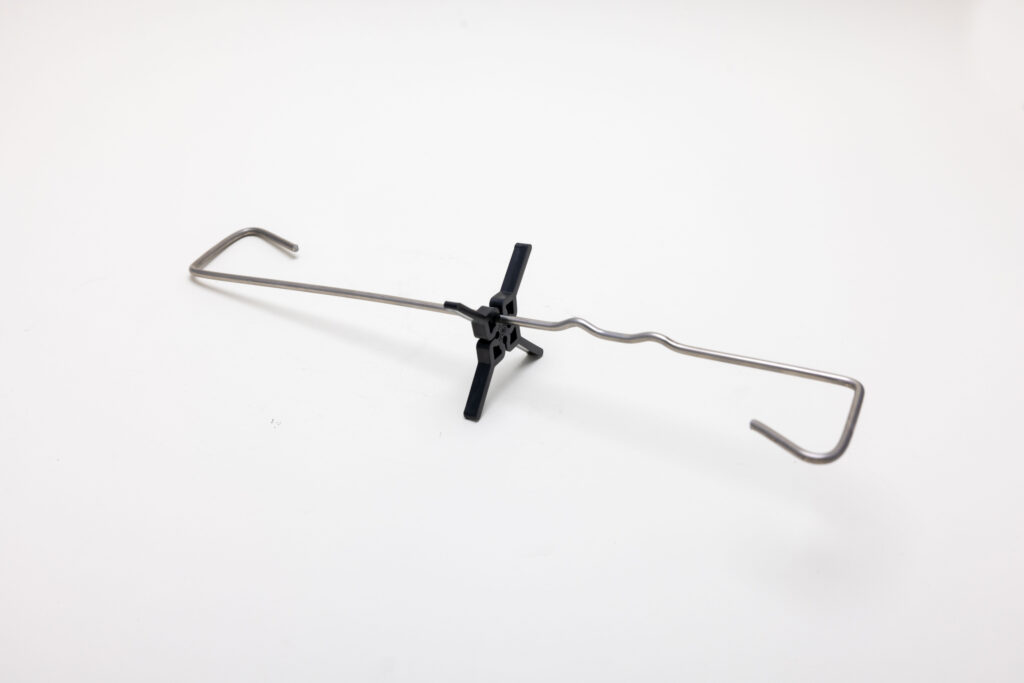Cavity walls, the masonry method of running two walls or ‘leaves’ parallel to each other, can have many advantages and disadvantages depending on the intended use of the finished wall structure. These cavity walls can be particularly useful for external walls, for example, as the space between the two leaves helps to prevent moisture entering the building, and allows for improved heat and sound insulation. For building projects, this can be a cheaper and more discrete alternative to other brickwork projects, however it does require expertise to complete the project correctly – meaning your team may end up spending material savings on a more expert mason.
Wall Ties in Cavity Walls
As mentioned, cavity walls can have many advantages for your overall building project – but how do you ensure that your cavity wall stands the test of time?
Installing wall ties, otherwise known as brick ties, into your cavity wall can play a vital role in ensuring your building maintains stability. As such, your wall ties should be afforded a great deal of care – insufficient or poorly installed wall ties can have a disastrous effect over time, leading to severe structural issues such as damp penetration, masonry cracks, or collapses in the outer masonry leaf. Not to mention, incorrectly installed wall ties could potentially rust or crack over time, leading to expensive repair projects.
Wall Tie Design
As with many building materials and processes, wall ties and their design have benefitted greatly from use and innovation since their introduction to building processes in the 1920’s. Since then, their design and manufacturing material has evolved to ensure long-lasting performance when installed correctly. For example, up until 1978 galvanised mild steel was the standard material used in wall tie construction – this was expected to last the lifetime of the building itself, however it was soon found that this form of steel can corrode after only 15-20 years. This reduced the efficacy of the wall tie, particularly considering the expensive replacement process involved once these ties corroded.
This revelation led to a switch to stainless steel – stainless steel withstands corrosion from water and cement without requiring additional coatings for protection, and is readily available as a manufacturing material commercially.
Where your project requires additional considerations, such as minimal loss of heat, your wall ties provider can further guide you on particular outcomes and requirements.

Considerations for Wall Ties Length and Spacing
When designing your cavity wall, you’ll also need to keep in mind several considerations to ensure lasting performance.
One consideration is regarding the length and spacing of your wall ties in the cavity wall space. Your wall tie must be long enough to reach across the cavity and embed into the mortar at both ends – also ensuring it clears the minimum embedment required to adhere to building regulations.
With cavity walls now becoming wider as standard (accommodating thicker insulation depths and improving energy efficiency standards), you may need to review your wall tie length if changes are made to the design of your building before other work commences.
Typically, you’ll see wall ties installed at 900mm (horizontal) x 450mm (vertical) spacings, staggered along the wall area to ensure an even distribution. Additional ties may be required for opened or unbonded edges, such as around window frames, which can be advised by your building designer ahead of project commencement.
Selecting Your Wall Tie
As with all aspects of your building project, the type, length, and material of your wall tie will depend on many factors. These factors can include:
- The type of masonry included in your project: Masonry to masonry connections will require one wall tie type, while masonry to timber will require another.
- The width of the cavity: This will determine the length of the wall tie you require.
- The type of building and height of the cavity wall involved in your project: A bungalow will need to be treated differently to a multi-story apartment building, for example.
- The geographical location of your project: Whether the building is in a high-altitude location, or regularly exposed to the elements, will have a bearing on the wall tie type best suited.
In addition to this list, as with all building materials and supplies, wall ties are governed by Building Regulations, which should also be kept in mind when deciding on your project’s specifications.
Work with a Specialist Team
The SCS team are experts in wall tie solutions, and would be happy to discuss your particular project requirements with you to ensure that you get the best results. Contact us today to learn more and get started.


